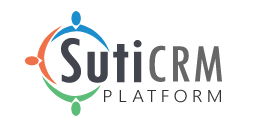Customer segmentation is the practice of grouping customers with similar characteristics together. Today, most companies strive for personalization, and customer segmentation is often the first step to do that. By splitting the customers into smaller groups, companies can create more relevant and targeted campaigns with marketing automation tools. As a result, brands are able to build more solid relationships with each of the customers in the segments and design more efficient sales and marketing campaigns. As a result, there is better lead management, higher sales revenue, and richer customer experiences.
Customer segmentation can be based on different parameters. The most common are demographic data such as age, gender and education or geographic data such as city, state or country. Further segmentation can be done based on purchase history or preferred communication channels. However, segmentation that matches the customer journey is often more useful and effective. Therefore, marketing automation tools can help create segments based on behavioral attributes, such as website actions or emails. This increases the relevance of campaigns, as emails and messages sent are directly linked to customer actions and inactivity.
Listings in customer segmentation
Customer segmentation is the practice of grouping customers with similar characteristics together. Today, most companies strive for personalization, and customer segmentation is often the first step to do that. By splitting the customers into smaller groups, companies can create more relevant and targeted campaigns with marketing automation tools. As a result, brands are able to build more solid relationships with each of the customers in the segments and design more efficient sales and marketing campaigns. As a result, there is better lead management, higher sales revenue, and richer customer experiences. Customer segmentation can be based on different parameters. The most common are demographic data such as age, gender and education or geographic data such as city, state or country. Further segmentation can be done based on purchase history or preferred communication channels. However, segmentation that matches the customer journey is often more useful and effective. Therefore, marketing automation tools can help create segments based on behavioral attributes, such as website actions or emails. This increases the relevance of campaigns, as emails and messages sent are directly linked to customer actions and inactivity.




















